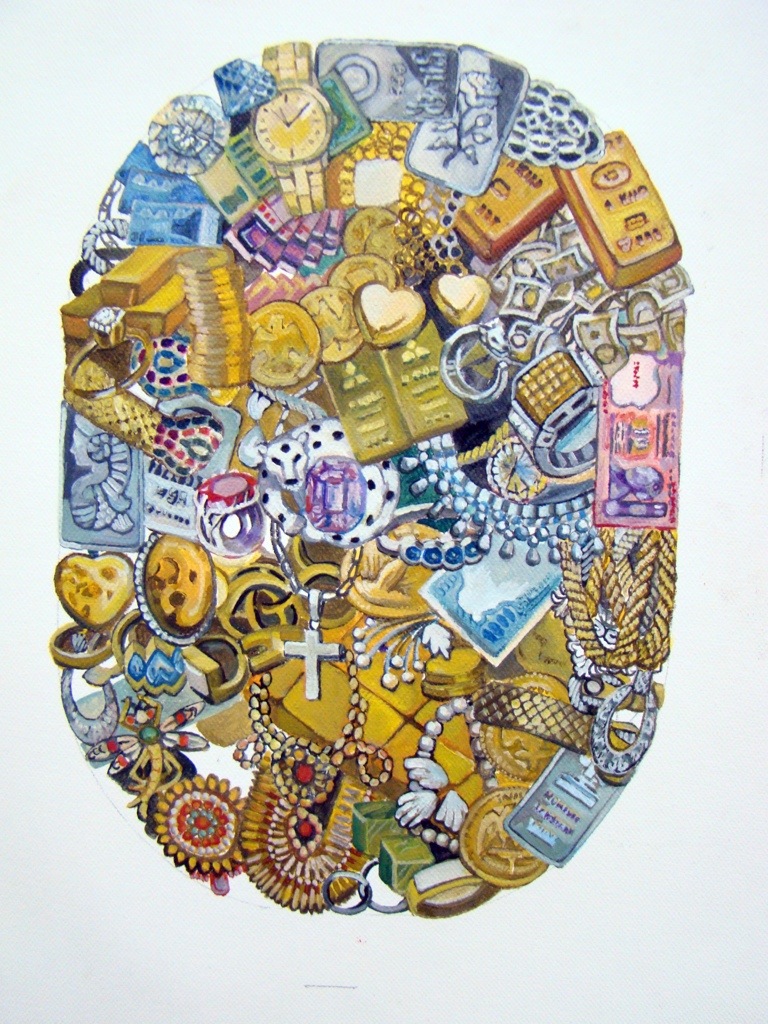New Delhi: Foreign artists are finding India a viable destination for long-haul art residencies, drawn to the rainbow colours and traditions that paint everyday life in the country. The rules of the game are changing as India gets a toehold on the global art map.
Till a few years ago, Indian artists queued up for foreign residencies, virtually begging for slots in popular art destinations in Europe and the US. But a growing number of private art archives in India that operate as “360 degrees” destinations offering integrated gallery space, opportunity for residencies and art education is powering a slow reversal of trend.
Foreign artists love the indigenous flavour of the residencies that allows them to explore the country, mingle freely with the local people, sample traditional life – and virtually live and paint the culture.
Irish multi-media artist Carol Driver was concentrating more or less exclusively on her “paintings” till she realised that her works were becoming literally and physically concentrated and tightly controlled.
“I began to use collage to achieve this shift – and was pleasantly surprised by what emerged,” she said. When Driver was approached by a Spanish gallery to participate in a residency in India, “she immediately saw the possibilities for furthering the avenue”.
Driver said if the residency at NIV Gallery that she attended this month in the capital was indicative of others in India, the infrastructure was as good as those in Europe.
“One small difference that stands out for me is the studio system here. The artist’s studio is permanently open, thus allowing coming and going by other artists and observers when you are closely involved in your work. In Europe, there is a door to close if you wish to concentrate fully and which you open when you are more relaxed,” Driver said.
The artist said she saw the difference as a cultural one.
British artist Louis Hudson, who weaves colours, textures and vibrancy in his work, says India meets his aesthetic needs with its rainbow palette.
“One of the reasons why I felt India was a easy place to practise my art was the country’s strong tradition of recycling everything,” Hudson, who was in India for a residency last month, told IANS.
“On my last visit I was particularly intrigued by sign painting which masquerades as mass communication but is actually a part of the traditional craft,” Hudson said.
Residencies in intimate developing countries like India provide networking space for artists – resulting in communities, says Spanish artist Montse Caraballo.
“An Indian residency which I attended last month was a unique experience. It created a small multi-cultural family,” said Caraballo.
The artist said she accepted the personal challenge of the change of language and customs that the new country raised, adapting to small things which improved by the day as she drew from the “contrasting high and low life of the capital” to fill her canvas with colours.
Spanish artists’ collective Los Vendaval, known for its experimental use of colours, found India “immersed in colour” at a residency in the capital this year.
“It was a culture so different from ours that made us very receptive, absorbing many things at once, especially in Delhi with the way we perceived how its inhabitants have to live in the chaos of a megacity,” said Pablo Alonso de la Sierra Figueroa, a member of the collective.
The Khoj International Artists’ Association, one of the country’s oldest residency space, has been drawing foreign artists since the mid-1990s. Over the decades, Khoj has pooled an international community of top-of-the-chain contemporary artists who are often described as “Khoj discovery”.
It is currently seeking global participants for an art residency on sound.
The Devi Art Foundation and Religare Art in the capital have plumbed new frontiers of creativity with international residencies like “Serai Reader 09” and “Connaught Place: The WhyNot Place” respectively that plays on urban Indian landscape, social issues and new media art.
As artists, the key to evolution is mobility, says Spanish artist Rocio Arevalo Vargas. “It is very interesting that European artists can travel to Asia and Asian artists may experience in Europe. All those who work some way within the scope of culture and contemporary art have to fight for it above political and economic circumstances,” artist Vargas said.
–IANS
The opinions, beliefs and viewpoints expressed by authors, news service providers on this page do not necessarily reflect the opinions, beliefs and viewpoints of Hill Post. Any views or opinions are not intended to malign any religion, ethnic group, club, organization, company, or individual.
Hill Post makes no representations as to the accuracy or completeness of any information on this site page.




